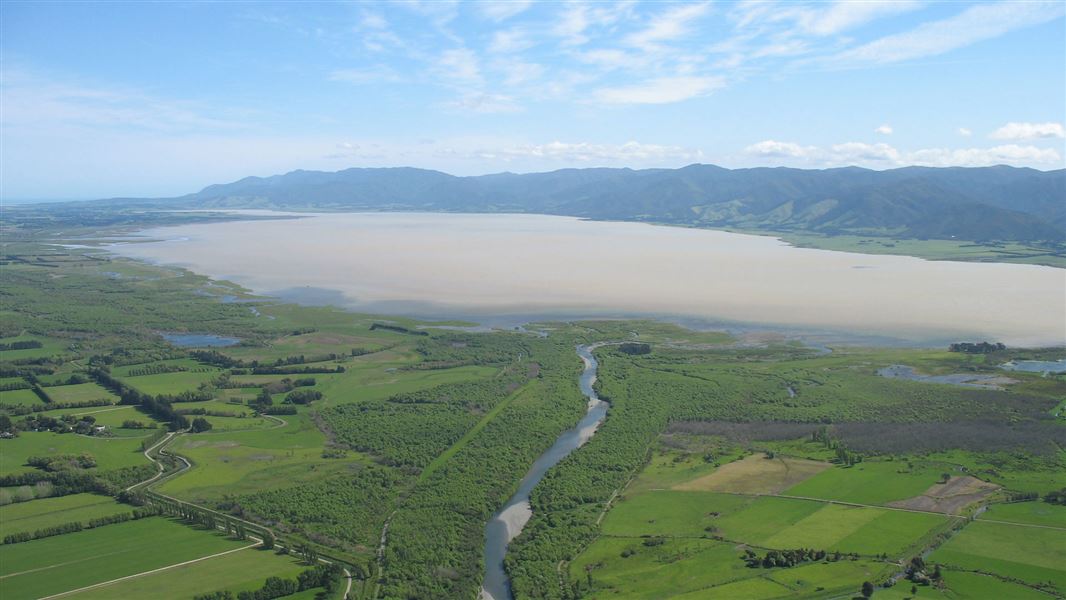Archived content: This media release was accurate on the date of publication.
Date: 12 November 2022
A new report shows that although we’ve had some wins for wetlands in Aotearoa New Zealand, including millions of dollars in freshwater funding, climate change and wetland loss pose significant challenges.
The report on the state of NZ’s wetland conservation has been published in the lead up to the Ramsar Convention Conference of Parties (COP14) meeting in Geneva, which kicked off 5 November.
DOC’s International Policy Manager Danica Stent says the report notes that the condition of our Ramsar wetland network remains unchanged, however, the overall state on New Zealand’s wetlands has declined due to multiple pressures including land conversion, pollution and climate change.
“Last summer was a stark reminder of our wetlands’ vulnerability when the Awarua Wetland Ramsar site in Southland and Kaimaumau-Motutangi in Northland were both ravaged by fire."
She says since human habitation of Aotearoa, 90% of our wetlands have been lost with some lowland wetlands now less than 1% of their original size.
“We can’t afford to lose more wetlands. They are a source of mahinga kai for Māori, a site for recreation, and a breeding ground and home for numerous indigenous species.
“We’re also increasingly aware of the crucial role wetlands play in climate change mitigation, through storing carbon, and climate change adaptation, by buffering and absorbing severe weather such as flooding and sea surges.”
Danica Stent says freshwater funding and the extension of the Ramsar network, both noted in the report, are a significant boost to wetland restoration efforts.
“Jobs for Nature funding includes over $400 million to improve freshwater management, with many of the funded projects providing direct or indirect benefits to wetlands. Some of the projects, such as Te Whanganui-A-Orotu (Ahuriri Estuary) restoration project in Hawkes Bay, and at Lake Moawhitu in the Marlborough region, have wetland restoration as a core objective.
“Robust targets and goals in the National Policy Statement for Freshwater and Te Mana o Te Taiaio New Zealand Biodiversity Strategy have been set to prevent further loss of wetlands, restore them to a healthy, functioning state and promote their role in carbon storage.
“We’ve also seen what strong partnerships can achieve. In 2020, Wairarapa Moana was granted Ramsar Wetland of International Importance status through Wairarapa iwi, community and local and central government collaboration. Wairarapa Moana is home to critically endangered birds and acknowledged by local Māori as a place of tremendous cultural and spiritual value.”
Danica Stent says the priorities for implementing the Ramsar Convention are to provide support and clear guidance so freshwater regulations are effectively applied across the country, and to support partnerships with iwi and hapū.
Ramsar COP14 concludes on 13 November. Officials will report back to Ministers on the global recommendations for improving wetland management that will help New Zealand to better protect and restore its wetlands.
New Zealand's latest Ramsar National Report (PDF, 241K)
Background information
The Ramsar Convention on Wetlands is an intergovernmental treaty for the conservation and wise use of wetlands and their resources.
New Zealand has seven wetland sites listed as internationally significant under the Ramsar Convention. They are: Wairarapa Moana; Farewell Spit (Golden Bay), Firth of Thames (Hauraki Gulf), Kopuatai Peat Dome (Hauraki Plains), Manawatū Estuary (Foxton, Horowhenua), Awarua-Waituna Lagoon (Southland), and Whangamarino Wetland (Northern Waikato).
All parties to the Ramsar Convention are required to regularly submit regular national reports to the Ramsar Secretariat.
Parties to the convention are also required to regularly update information on the status of its Ramsar Sites. This is done by updating the Ramsar Information Sheet (RIS) for each site and submitting it to the Ramsar Secretariat.
Contact
For media enquiries contact:
Email: media@doc.govt.nz
